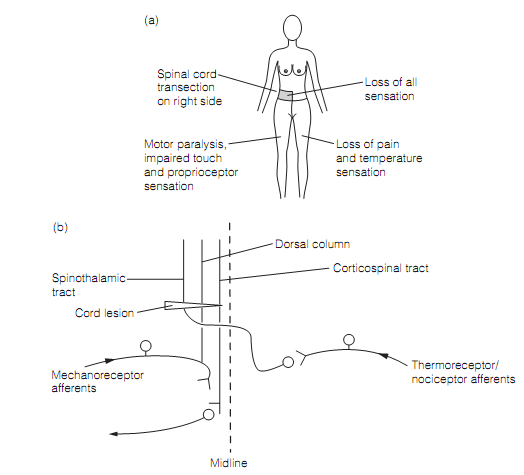Brown–Sequard syndrome
A classic prototype of sensory and motor deficits, the Brown–Sequard syndrome, is seen whenever the spinal cord is severed on one part. On the part of the lesion there is a motor paralysis and loss of all sensation transmitted via the dorsal columns (touch and proprioception). On the contralateral part there is loss of thermoreceptor and nociceptor sensation from some spinal segments beneath the lesion. This is due to the interruption of the anterolateral columns that contain spinothalamic axons which have crossed from the opposite side which is as shown in figure below.

Figure: Brown–Sequard syndrome outcomes from the hemi-section of the spinal cord that interrupts dorsal column input and motor output on the side of the lesion and spinothalamic input from the contralateral side. (a) Signs & symptoms (b) lesion.